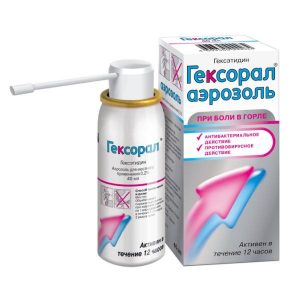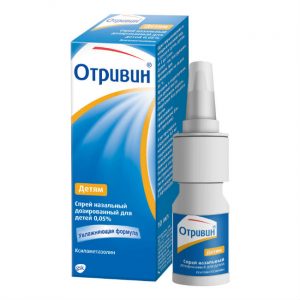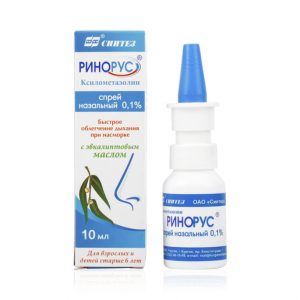Description
Briefly about the product
Coldrex MaxGripp is a combined product, the action of which is due to the active ingredients included in the composition:
Paracetamol has anesthetic and anesthetic.
Phenylephrine is a vasoconstrictor, relieves nasal congestion (narrows the vessels of the nasal mucosa and paranasal sinuses) and facilitates breathing.
Ascorbic acid (Vitamin C) fulfills the need for Vitamin C in case of rest and flu.
Active substances Coldrex MaxGripp do not cause drowsiness. *
* Instructions for medical use, RU Ñ N014920 / 01
Release form
Coldrex Max Flu. Powder for solution.
Packaging
6.427 g – multilayer sachets (5) – packs of cardboard.
Pharmacological action
Combined agent whose action is due to its constituent components.
Paracetamol is an analgesic and antipyretic. The mechanism of its action is supposedly to suppress the synthesis of prostaglandins, mainly in the central nervous system.
Paracetamol has an extremely small effect on the synthesis of prostaglandins in peripheral tissues, it does not alter water-electrolyte metabolism and does not damage the mucous membrane of the gastrointestinal tract.
This property of paracetamol makes the drug particularly suitable for patients with a history of gastrointestinal diseases (for example, patients with a history of gastrointestinal bleeding or elderly patients) or patients taking concomitant medication in which suppression of the synthesis of peripheral prostaglandins may be undesirable .
Phenylephrine hydrochloride is a sympathomimetic drug whose action is aimed at stimulating adrenoreceptors (mainly -adrenoreceptors), which leads to a decrease in swelling of the nasal mucosa and facilitation of nasal breathing.
Ascorbic acid (vitamin C) makes up for the increased need for vitamin C for colds and flu, especially in the initial stages of the disease.
The components of the preparation do not cause drowsiness or disturb attention span.
Indications for
Cold and flu symptoms:
elevated body temperature
headache
chills
joint and muscle pain
nasal congestion
sore throat
sinus pain.
Contraindications
Hypersensitivity to paracetamol, phenylephrine, ascorbic acid (vitamin C) or to any other ingredient of the drug.
Pregnancy.
Breastfeeding.
Severe liver or kidney disease.
Diseases of the blood system.
Increased thyroid function (thyrotoxicity).
Arterial hypertension.
Diseases of the heart: severe stenosis of the mouth of the aorta, acute myocardial infarction, tachyarrhythmia.
Prostate hyperplasia.
Angle-closure glaucoma.
Concomitant use of tricyclic antidepressants, beta-blockers, MAO inhibitors and up to 14 days after their withdrawal.
Diabetes mellitus and diseases associated with hereditary malabsorption of sugar – each sachet contains 4 g of sugar.
Genetic lack of glucose-6-phosphate dehydrogenase.
Age to 18 years.
Precautions:
Benign hyperbilirubinemia.
Recommendations for using
If you have one of the listed diseases / conditions / risk factors, be sure to consult your doctor before taking the drug:
Benign hyperbilirubinemia.
Impaired liver and kidney function of mild to moderate severity.
Acute hepatitis.
Alcoholic liver disease.
Difficulty urinating.
Pyloroduodenal obstruction.
Stenosing gastric and / or duodenal ulcer.
Bronchial asthma.
Cardiovascular disease, including high blood pressure, obliterating vascular disease (Raynaud’s syndrome).
Pheochromocytoma.
The presence of severe infections, including sepsis, because taking the drug may increase the risk of metabolic acidosis.
Patients with glutathione deficiency (in particular, extremely malnourished patients suffering from anorexia, chronic alcoholism or patients with a low body mass index).
Concomitant use of antihypertensive drugs.
Use during pregnancy and lactation
Pregnancy
The drug should not be used during pregnancy without first consulting a doctor!
In studies in animals and humans, there was no risk of paracetamol during pregnancy or a negative effect on fetal development.
There are no sufficient data on the effect of drugs containing phenylephrine on pregnancy.
The maximum daily dose of ascorbic acid during pregnancy is 2000 mg, which significantly exceeds the maximum daily dose of the drug, therefore, taking the drug in pregnant women is presumably not associated with the risk of side effects from ascorbic acid.
Breastfeeding period
The drug should not be used during breastfeeding without first consulting a doctor!
Paracetamol crosses the placental barrier and into breast milk. In studies conducted in humans, no adverse effects on the baby s body were found during breastfeeding.
Phenylephrine may pass into breast milk.
The maximum daily dose of ascorbic acid during breastfeeding is 2000 mg, which significantly exceeds the maximum daily dose of the drug, therefore, taking the drug in women during breastfeeding is not associated with the occurrence of side effects from ascorbic acid.
Special instructions
The patient should be informed that if the symptoms of the disease persist after 5 days of using the drug, you should stop taking it and consult a doctor.
The drug should be taken only at recommended doses.
The drug should not be taken concomitantly with other drugs, containing paracetamol, as well as other non-narcotic analgesics (metamizole sodium), NSAIDs (acetylsalicylic acid, ibuprofen), barbiturates, anticonvulsants, rifampicin and chloramphenicol, sympathomimetics (such as decongestants, appetite suppressants, psycho-amphetaminophen) to relieve symptoms of the common cold and flu.
When conducting tests to determine uric acid and blood glucose levels, the patient must inform the doctor about the use of Coldrex ® MaxGripp, as the drug may distort the results of laboratory tests evaluating the concentration of glucose and uric acid.
Before taking Coldrex ® MaxGripp, you need to consult a doctor if:
is taking metoclopramide, domperidone (used to eliminate nausea and vomiting) or colestyramine used to lower blood cholesterol
– taking blood clotting drugs (e.g. warfarin)
– low sodium diets – each bag contains 0.12 g
heavy sodium infectious diseases (including sepsis) in patients with glutathione deficiency, because while taking paracetamol, the risk of metabolic acidosis may increase, signs of which are a violation of the frequency and depth of breathing, accompanied by a feeling of lack of air (shortness of breath), nausea, vomiting, loss of appetite. If the patient discovers these, consult a doctor immediately.
In order to avoid toxic liver damage, paracetamol should not be combined with alcohol, and also taken to people who drink alcohol chronically.
Effect on the ability to drive vehicles and mechanisms
When taken in recommended doses, the drug does not affect the ability to drive vehicles and mechanisms, as well as engage in other potentially dangerous activities that require concentration and speed of psychomotor reactions. When dizziness occurs, it is not recommended to drive vehicles or work with mechanisms.
Composition
Paracetamol
ascorbic acid
phenylephrine hydrochloride
Indications
Eczema, Allergy, Neurodermatitis, Dermatosis, Psoriasis, Urticaria, Dermatitis tr.
Do not exceed the specified dose!
The lowest dose needed to achieve the effect should be used!
The minimum interval between doses of Caldrex ® MaxGripp should be 4 hours.
Put the contents of one sachet in a mug and pour half a mug of hot water. Stir until dissolved. Add cold water if necessary and sugar to taste.
Adults: Inside, single dose – 1 sachet. Repeated use of the drug is possible no earlier than 4-6 h and no more than 4 times / day.
The maximum daily dose should not exceed 4 sachets.
The maximum duration of the drug without consulting a doctor is no more than 5 days.
Do not take at the same time as other paracetamol-containing agents, decongestants and agents to relieve the symptoms of colds and flu, as well as ethanol-containing agents and drinks.
If symptoms persist when taking the drug, you need to see a doctor.
Side effects
Determination of the frequency of side effects: very often (? 1/10), often (? 1/100 and <1/10), infrequently (? 1/1000 and <1/100), rarely (? 1 / 10 000 and <1/1000), very rarely (? 1/100 000 and <1/10 000). At recommended doses, the drug is usually well tolerated. Paracetamol rarely has a side effect. From the hemopoietic system: very rarely – thrombocytopenia, leukopenia, agranulocytosis. Allergic reactions: very rare – anaphylactic shock, skin rash, urticaria, angioedema, Stevens-Johnson syndrome. From the respiratory system: veryrarely – bronchospasm in patients sensitive to acetylsalicylic acid and other NSAIDs. From the liver and biliary tract: very rarely – impaired liver function. From the urinary system: with prolonged use in excess of the recommended dose, a nephrotoxic effect may be observed. Phenylephrine From the nervous system: very rarely – nervousness, headache, dizziness, insomnia. From the cardiovascular system: very rarely – increased blood pressure, tachycardia, palpitations. From the digestive system: very rarely – nausea, vomiting. On the part of the sensory organs: very rarely – mydriasis, an acute attack of glaucoma in most cases in patients with angle-closure glaucoma. Allergic reactions: very rare – skin rash, urticaria, allergic dermatitis. From the urinary system: very rarely – dysuria, urinary retention in patients with obstruction of the outlet of the bladder with prostatic hypertrophy. Ascorbic acid The incidence of side effects has not been established. Allergic reactions: skin rash, flushing of the skin. From the digestive system: irritation of the gastrointestinal mucosa. From the hemopoietic system: thrombocytosis, hyperprothrombinemia, erythropenia, neutrophilic leukocytosis. Other: hypokalemia. When taking ascorbic acid more than 600 mg / day, moderate pollakiuria is possible. In case of side effects, the patient should immediately stop taking the drug and consult a doctor as soon as possible. If any of the above side effects get worse, or any other side effects appear, the patient should inform your doctor. Drug Interaction Paracetamol, when taken for a long time, increases the effect of indirect anticoagulants (warfarin and other coumarins), which increases the risk of bleeding. Episodic intake of a single dose of the drug has no significant effect on the effect of indirect anticoagulants. Inductors of microsomal oxidation enzymes in the liver (barbiturates, diphenin, carbamazepine, rifampicin, zidovudine, phenytoin, ethanol, flumecinol, phenylbutazone and tricyclic antidepressants) increase the risk of hepatotoxic action with paratotoxic action. Microsomal oxidation inhibitors (cimetidine) reduce the risk of hepatotoxic action. Paracetamol reduces the effectiveness of diuretics. Metoclopramide and domperidone increase, and cholestyramine reduces the absorption rate of paracetamol. Paracetamol enhances the effects of MAO inhibitors, sedatives, ethanol. Phenylephrine, when taken with MAO inhibitors, can lead to increased blood pressure. Phenylephrine reduces the effectiveness of beta-blockers and antihypertensive drugs, increases the risk of developing hypertension and disorders of the cardiovascular system. Concomitant use of phenylephrine with sympathomimetic amines may increase the risk of side effects from the cardiovascular system. Tricyclic antidepressants increase the sympathomimetic effect of phenylephrine, and may increase the risk of side effects from the cardiovascular system. Co-administration of halothane with phenylephrine increases the risk of ventricular arrhythmia. Phenylephrine reduces the hypotensive action of guanethidine, which in turn enhances the alpha-adrenostimulating activity of phenylephrine. Antidepressants, antiparkinsonian agents, antipsychotics, phenothiazine derivatives increase the risk of urinary retention, dry mouth, constipation. Co-administration of ACS with phenylephrine increases the risk of glaucoma. When used with digoxin and cardiac glycosides, the risk of developing heart rhythm or heart attack may be increased. Ascorbic acid increases the risk of crystalluria when treated with short-acting salicylates and sulfanilamides, slows the elimination of kidneys by acids, increases the excretion of drugs that have an alkaline reaction (including alkaloids), lowers the blood concentration of oral contraceptives. Ethanol promotes acute pancreatitis. Myelotoxic drugs increase the manifestation of the hematotoxicity of the drug. Peredozyrovka in cases of drug peredozyrovky Koldreks ® MaksHrypp (Even in a good state of health) It should uchyt vat risk of more serious occurrence otsrochenn h pryznakov damage to the liver. An overdose is usually caused by paracetamol. Liver damage in adults is possible with admission 10 g of paracetamol. Reception 5 g of paracetamol can lead to liver damage in patients with the following risk factors: – prolonged treatment with carbamazepine, phenobarbital, phenytoin, primidone, rifampicin, St. John’s wort drugs, or other drugs that stimulate liver enzymes – regular use of alcohol in excess amounts of – glutathione deficiency (due to malnutrition, cystic fibrosis, HIV infection, starvation, starvation). Symptoms (caused by paracetamol): pallor of the skin, nausea, vomiting, anorexia, abdominal pain for 12-48 h may occur within 24 hours, signs of impaired liver function, signs of impaired glucose metabolism and metabolic acidosis may occur. In the case of severe poisoning, severe hepatic insufficiency may develop up to hepatic encephalopathy, coma and death. Acute renal failure with acute tubal necrosis, which is diagnosed by severe lumbar pain, hematuria and proteinuria, can develop without severe impairment of liver function. There have been reports of cardiac arrhythmias and pancreatitis with an overdose of paracetamol. In the early period, symptoms may be limited only by nausea and vomiting and may not reflect the severity of the overdose or the degree of risk of damage to the internal organs. Treatment: during the first hour after the presumed overdose, it is advisable to appoint activated charcoal inside. 4 or more hours after the presumed overdose, a determination of the plasma concentration of paracetamol is required (earlier determination of the paracetamol concentration may be unreliable). The antidote is acetylcysteine. Acetylcysteine treatment can be performed up to 24 h after administration of paracetamol, however, the maximum hepatoprotective effect can be obtained within the first 8 h after overdose. After that, the effectiveness of the antidote drops sharply. Acetylcysteine can be injected into / if necessary. In the absence of vomiting, the alternative (in the absence of the possibility of rapid hospital care) is the appointment of methionine inside. Treatment of patients with severe liver dysfunction 24 hours after taking acetaminophen should be carried out in conjunction with specialists at the toxicology center or specialized department of liver disease. At the first signs of overdose, you should seek immediate medical attention, even in the absence of clear symptoms of poisoning. Symptoms caused by phenylephrine: irritability, headache, dizziness, insomnia, increased blood pressure, nausea, vomiting, increased excitability, reflex bradycardia. In severe cases of overdose development of hallucinations, confusion, convulsions, arrhythmias is possible. An overdose with phenylephrine can cause symptoms similar to side effects. Treatment: symptomatic therapy, with severe hypertension using alpha-blockers, such as phentolamine. Symptoms caused by ascorbic acid: when using more than 1 g – headache, increased excitability of the CNS, insomnia, nausea, vomiting, diarrhea, hyperacid gastritis, damage to the gastrointestinal mucosa, suppression of pancreatic glandular disease, pancreatic glandular disease, (from calcium oxalate), damage to the glomerular kidney apparatus, decrease in capillary permeability (possible deterioration of tissue trophism, increased blood pressure, hypercoagulation, development of microangiopathies). High dose ascorbic acid (more than 3000 mg) can cause temporary osmotic diarrhea and gastrointestinal disorders such as nausea, stomach discomfort. The manifestations of ascorbic acid overdose can be categorized as which are caused by severe liver damage as a result of paracetamol overdose. Treatment: symptomatic, forced diuresis. Storage conditions The drug is recommended to be stored out of the reach of children at a temperature not exceeding 25 ° C. Expiration Expiration 3 years. GlaksoSmitKlyan, Great




